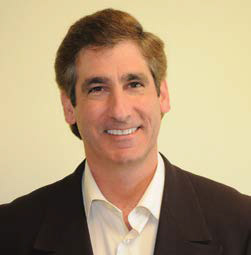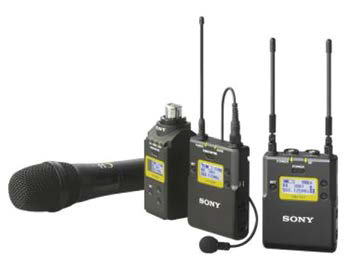Mic Companies Await FCC Auction Rules

Shure’s GLX-D wireless mic system operates in 2.4 GHz band.
LOS ANGELES—Having lost access to the 700 MHz band a few years ago, wireless microphone operators are now eyeing the proposed broadcast TV spectrum incentive auction with understandable trepidation. There are still some kinks to be worked out, but if the auction of the 600 MHz band goes ahead as planned in 2015, RF mic users could find themselves squeezed—once again—into a fraction of the spectrum that is currently available.
“The one thing that we like to stress is that nothing has been decided yet,” said Gino Sigismondi, senior manager of Shure Systems Support. “The truth is that this is a brand new type of auction that the FCC has never done before, so there are a lot of technical ins and outs they’re trying to figure out in terms of how they’re going to make this work.”
UPCOMING VOTE
Indeed, the FCC has yet to set out the rules under which television broadcasters will offer up their bandwidth or how the relinquished frequencies will be repacked into blocks of cleared spectrum for auction. According to a recent report in TV Technology sister publication Multichannel News, a vote on that Report & Order could take place at the FCC’s scheduled open meeting on May 15 or possibly June 13.
It’s highly probable that wireless mic operators will lose access to the 600 MHz UHF band sooner or later, according to Joe Ciaudelli, who leads Spectrum Affairs for Sennheiser. “There are a number of details that make it not perfectly clear whether this auction will succeed,” he said. “But if it doesn’t succeed when they try it next year they’re likely to change the guidelines and try again in years to come. That’s why I say sooner or later.”

Joe Ciaudelli of Sennheiser
So, the sky is falling—just not yet.
Much has been written in the media about the proposed incentive auction, and the FCC has been very forthcoming about its intentions, even if the ground rules have yet to be defined. The DTV Audio Group recently announced that it has established a working group to liaise with the FCC’s Office of Engineering and Technology in order to establish what frequency spectrum might be available to professional wireless users in the future. In an online statement on its web site, the group noted, “[N]ot only does the FCC plan to eliminate the protections afforded the pro audio industry during the ‘white space’ debate, but after repacking there is unlikely to be much white space available in any case.”
Get the TV Tech Newsletter
The professional video industry's #1 source for news, trends and product and tech information. Sign up below.
The group comprises broadcast network members, frequency coordinators and end-users, and wireless microphone manufacturers and service providers. Group representatives met with David Goldman, senior legal advisor to Commissioner Rosenworcel, on Feb. 5 to discuss the incentive auction as well as amendments and revisions to the rules regarding the operation of low-power auxiliary stations, which includes wireless microphones.
With the available spectrum shrinking, Ciaudelli noted, “packing more mics within a small block of spectrum is going to be a trend.”
SOME SOLUTIONS
Sennheiser’s SK5212 MkII bodypack and SMK 5200 MkII handheld transmitter, as examples, feature a mode that reduces the RF output power, instead feeding a highly linear RF amplifier to provide more headroom to prevent intermodulation distortion. This allows users to pack more mics within a small block of spectrum.
“The rule of thumb is that you can operate six wireless mics or monitors within a 6 MHz TV channel,” Ciaudelli said. “If you’re using really good equipment you can squeeze in 10 frequencies.”
Manufacturers are also offering more tuning options through expanded bandwidth. Sony previously offered a range of four UHF TV channels or 24 MHz of RF bandwidth, according to Karl Kussmaul, senior product manager for Sony Electronics. “Even with our UWD-P analog wireless system, we’ve now increased that to upwards of 72 MHz—meaning you can access up to 12 UHF TV channels,” he said. “We also offer three of these up-to-72 MHz blocks to cover the entire UHF television spectrum, from channel 14 through 51, that are allocated for wireless microphone use.”
Shure’s ULX-D system enables 17 compatible channels to be operated in a 6 MHz chunk, Sigismondi said. Plus, he said, “ULX-D, which is our newest digital system, has a 64 MHz tuning range, which is a wider tuning bandwidth than anything we’ve had in the past.”
Despite Sennheiser’s Digital 9000 system transmitting uncompressed audio, which is a huge amount of data, according to Ciaudelli, “it fits within the FCC-prescribed 200k spectral mask that any one wireless mic is allowed to occupy.”
Because the system is impervious to intermodulation distortion, he continued, “you can have equally-spaced carriers; basically, you don’t have to do frequency coordination. All you have to do is find clean spectrum and make sure you place your mics at least 500 kHz apart from each other. But they can all be 500 kHz apart and you don’t have to worry about IMD.”

Sony’s DWX digital wireless microphone system Sony’s new clear channel scanning feature also aids frequency coordination, allowing a user to confirm that a selected frequency is unoccupied by some other source of RF signal, Kussmaul said. Further, “our DWX digital and UWD-P analog wireless systems offer frequency selection in 125k and 25k increments.” That granularity enables Sony systems to be incorporated into channel plans using other manufacturers’ products, featuring similar incremental tuning, without interference.
“Providing people [with] options outside of the traditional UHF television bands is definitely a big part of what we’re doing right now,” added Sigismondi. Shure’s PGX-D operates at 900 MHz, GLX-D at 2.4 GHz, and MicroFlex at 1.9 GHz. “So there are other parts of the spectrum that could be usable.”
Sony’s DWZ digital wireless system also operates at 2.4 GHz and is intended for small-scale uses, said Kussmaul. “That’s a viable alternative for applications where there isn’t a need for a large number of simultaneous systems.”
